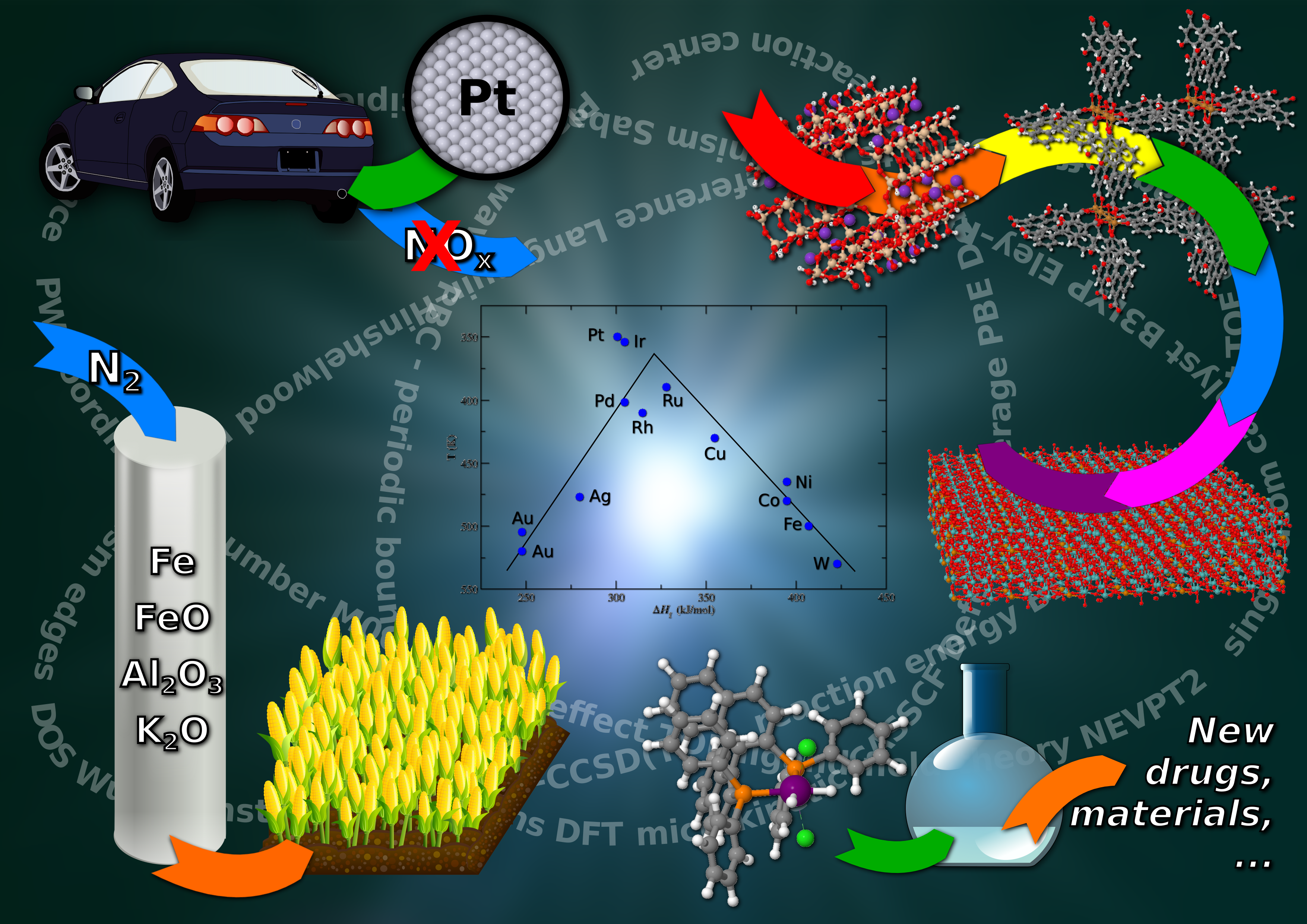Theoretical Aspects of Transition Metal Catalysis
A special issue of Molecules (ISSN 1420-3049). This special issue belongs to the section "Physical Chemistry".
Deadline for manuscript submissions: closed (31 December 2021) | Viewed by 6234
Special Issue Editors
Interests: computational catalysis; DFT and multireference methods; MOF; PAH
Special Issues, Collections and Topics in MDPI journals
Interests: DFT; TD-DFT; catalysis; photo-catalysis; SURMOFs; zeolites; excited state processes
Special Issue Information
Dear Colleagues,
Known worldwide and commercially concealed, at room temperature or at 1000 °C, transition metal catalysis surrounds us, runs inside us, defines world economics, protects nature, and provides us with products without which we cannot imagine life. Long before the Haber process that abolished the Malthusian trap, chemists in universities and industry were looking for catalysts of their reactions, and transition metals came into use more often than any other class of compounds. On one side, at least three Nobel prizes have been directly related to transition metal catalysis. On the other, every second ton of palladium or platinum is turned into car catalysts and lab or industrial reactors. The trial-and-error approach in search for novel catalysts gave its place to rules-of-thumb, and they, in turn, to computational predictions. Today, the power of computational chemistry surpasses the combinatorial possibilities of synthesis of new catalytic materials and prediction of their properties, thus becoming a crucial component of novel catalyst design based on theoretical insights. Low concentration, high reaction speed, and harsh reaction conditions often significantly limit the amount of data that experimental scientists can provide to their theoretical colleagues, while the variability of oxidation states, sensitivity to the effects of promotors, ligands, and solvent, as well as the possibility of multireference problems make the work and contribution of computationalists even harder. Nonetheless, this Special Issue is devoted to the huge progress in the theoretical understanding of transition metal catalysis taking place today.

Dr. Dmitry Sharapa
Dr. Marjan Krstić
Prof. Dr. Karin Fink
Guest Editors
Manuscript Submission Information
Manuscripts should be submitted online at www.mdpi.com by registering and logging in to this website. Once you are registered, click here to go to the submission form. Manuscripts can be submitted until the deadline. All submissions that pass pre-check are peer-reviewed. Accepted papers will be published continuously in the journal (as soon as accepted) and will be listed together on the special issue website. Research articles, review articles as well as short communications are invited. For planned papers, a title and short abstract (about 100 words) can be sent to the Editorial Office for announcement on this website.
Submitted manuscripts should not have been published previously, nor be under consideration for publication elsewhere (except conference proceedings papers). All manuscripts are thoroughly refereed through a single-blind peer-review process. A guide for authors and other relevant information for submission of manuscripts is available on the Instructions for Authors page. Molecules is an international peer-reviewed open access semimonthly journal published by MDPI.
Please visit the Instructions for Authors page before submitting a manuscript. The Article Processing Charge (APC) for publication in this open access journal is 2700 CHF (Swiss Francs). Submitted papers should be well formatted and use good English. Authors may use MDPI's English editing service prior to publication or during author revisions.
Keywords
- volcano plot (Sabatier’s principle)
- homogeneous catalysis
- heterogeneous catalysis
- biocatalysis, photocatalysis, and electrocatalysis
- single-atom catalysis
- porous structures (MOFs, Zeolites)
- catalysis on interface
- Tandem catalysis







